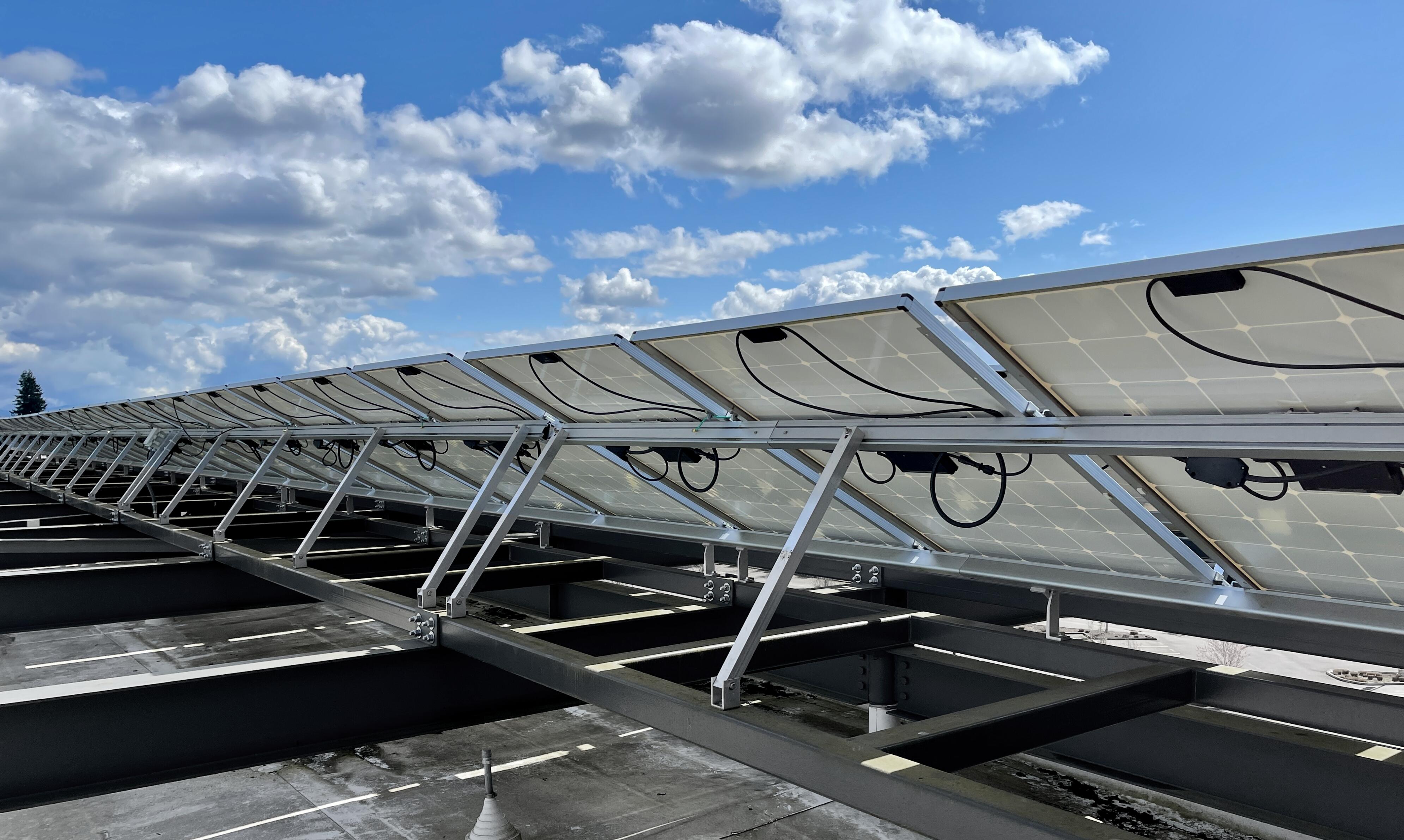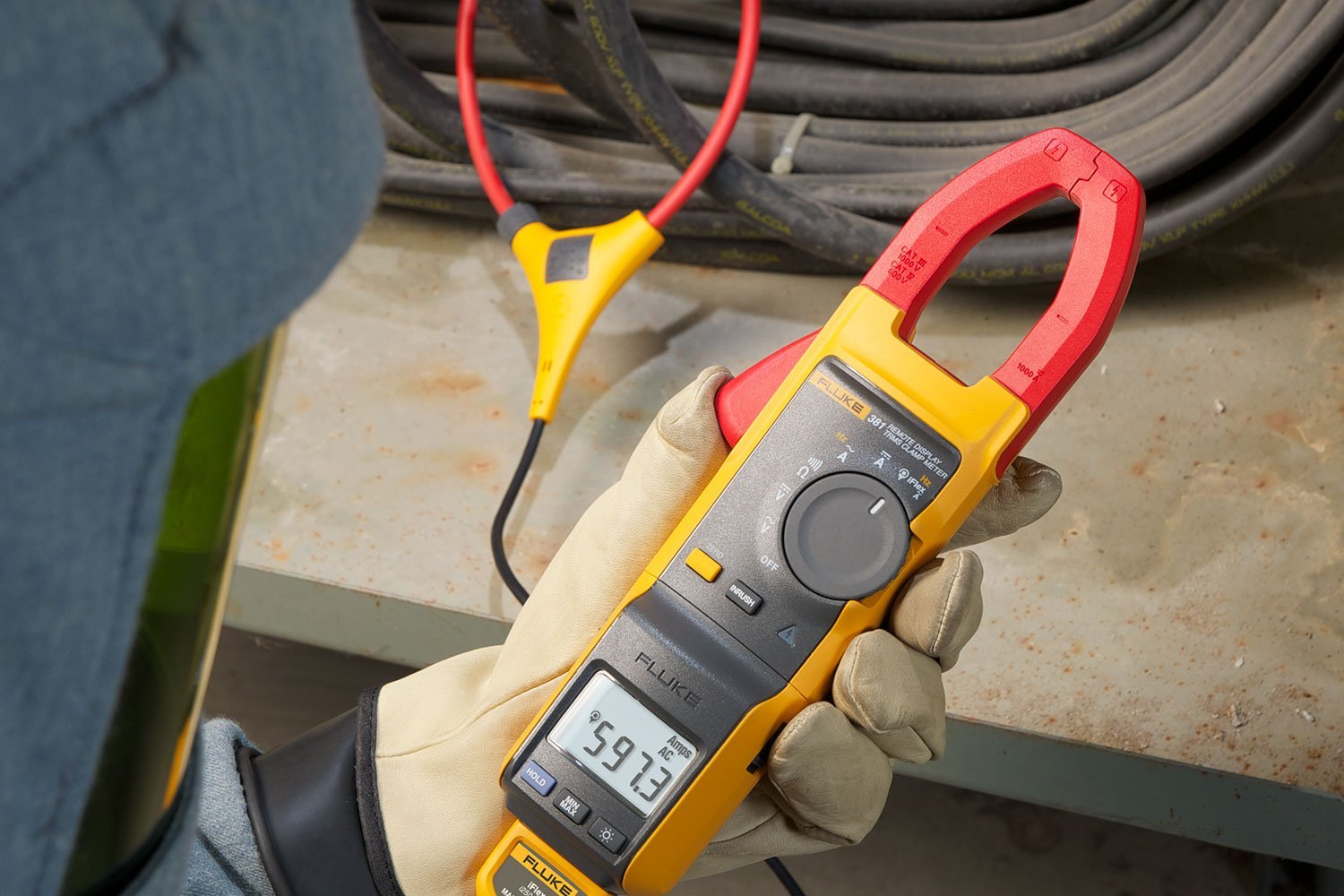Late on a Sunday afternoon the Kern County Fire Department responded to a call at a store on Rosedale Highway in Bakersfield, California. Crews found that a row of solar panels on the roof had caught fire. Some of the panels were still live when the crew arrived, so the fire crew had to take extra precautions until electrical power could be disconnected.

Fundamentals of Photovoltaic System Installation
In very basic form, a solar energy installation begins with photovoltaic (PV) panels collecting sunlight. The PV array supplies DC voltage to an inverter, which converts the DC into AC. Some installations have batteries, automatic transfer switching units, monitoring and metering equipment, and devices that allow electricity to be fed back to the grid.
Fortunately, the crews quickly extinguished the fire, which didn't penetrate the roof's metal decking. Officials cleared the store, which reopened about four hours after the call. The lesson to be learned from this example is not that solar energy is unsafe or dangerous; it is to raise safety awareness when working with photovoltaic systems. While firefighters and first responders need to know how to safely disconnect electricity to ensure safety for emergency personnel and to allow egress, facility maintenance technicians need to know how to keep the electricity flowing safely and reliably.
Understanding Photovoltaic System Configurations
A typical commercial photovoltaic cell with a surface area of 160 cm2 (25 square inches) produces about 2 watts of power under peak sunlight conditions. If sunlight intensity is 40 percent of peak, the cell produces about 0.8 watt. To become useful as an electrical energy source, PV cells must be connected in series and parallel circuit configurations to produce higher voltages and current. Wiring modules in series to produce "strings" increases voltage, wiring the strings together in parallel increases current. A 30-module array can produce 4 kilowatts.
Manufacturers combine PV cell circuits in sealed, environmentally protective laminate to construct PV modules— the fundamental building blocks of PV generating systems. PV panels include several PV modules assembled and pre-wired to be field-installable. A PV array is a complete power-generating unit, which can include any number of PV modules and panels.
The Role of Photovoltaic Systems in Power Generation
Photovoltaic systems can provide supplemental power for homes, businesses, municipalities, military installations, or anyone willing to make the commitment and investment. PV can be the primary power source for remote systems; for example, in pipeline-type process industries as well as in temporary field-work situations. While most of the information in this article applies to both residential and commercial PV installations, the primary focus is on commercial. Usually, residential systems differ only in size. Operating principles and configurations are very similar. Commercial systems tend to be more complex, but this isn't always the case.
Placement and Functioning of PV Arrays
PV arrays can be placed on the roof of a facility—as with the store in Bakersfield—or on land adjacent to the facility. Typically, solar arrays require around three to five acres per megawatt. Roof and building-mounted arrays maximize the total sunlight-collection footprint available for a site. However, the potential for roof penetrations and roof loading as well as their consequences should be considered.
The conceptual basis for nearly every useful solar energy installation starts with the PV panels collecting sunlight. The PV array supplies dc voltage to an inverter, which converts the dc into 60 Hz ac. The ac from the inverter supplies energy to the facility or home.
Obviously, there are some important elements missing to make this example system useful and safe. Depending on the facility requirements, a system can also include any number of dc switching and protection devices, such as dc combiner boxes, circuit breakers, disconnect switches, and contactors. Inverters are available in many configurations and power ranges. (A combiner box is a junction box used as the parallel connection point for two or more circuits.) Some large installations employ several inverters. A "real-world" system also includes ac switching and protection devices such as ac panelboards and switchboards, disconnect switches, circuit breakers, low- and medium-voltage switchgear, and low- and medium-voltage transformers. Some installations also have batteries, automatic transfer switching units, monitoring and metering equipment, and devices that allow electricity to be back-fed to the grid. Functional and operational requirements, component configurations, and how the equipment connects to other power sources and electrical loads determine PV power system classifications. The two main classifications are grid-connected (or utility-interactive) systems and standalone systems.
Grid-connected systems operate while interconnected with the utility grid. Besides the PV array itself, the main component in a grid-connected system is the inverter. The PV system, specifically the inverter, interfaces bi-directionally with the electric utility network, typically at an onsite distribution panel or service entrance.
Stand-alone PV systems operate independently of the utility grid. Facilities that use a stand-alone PV system typically use batteries for energy storage. Batteries store energy from the PV array during the day and provide energy to the electrical loads during the night or on cloudy days. Batteries also help stabilize system voltage and supply surge current to electrical loads if necessary. Typically, battery-charging controllers protect batteries from overcharging and over-discharging.
Differentiating Photovoltaic Systems from Utility-supplied Electricity Main Components of Photovoltaic Electrical Systems
The obvious difference between photovoltaic electrical systems and utility-supplied electricity is that PV arrays generate dc. The electricity generated does not become ac until it is processed by the inverter. Some of a PV installation is necessarily dc, which requires different types of components from ac installations. Components in PV systems that are not found in ac systems include combiner boxes and dc-disconnect switches.
Solar combiner boxes aggregate the dc power from the PV array, and provide overcurrent protection according to National Electrical Code (NEC) requirements. Individual inputs connect to fuse holders. The load sides of the fuse holders connect together to form a common bus, which connects to the output lugs. Combiner boxes are either source combiners or array combiners. Source combiners are located closer to the PV panels. Array combiners—or re-combiners—aggregate outputs from several source combiners into a single circuit and are found in large installations. Array combiners have higher input fuse holders and higher output current.
Typically, PV systems generate voltage in the 400 V dc to 600 V dc range, a much higher voltage than found in most building systems. Combining this higher voltage with the lack of a current sine wave with zero-crossings creates several system design, component, and wiring challenges— particularly when switching these dc circuits on and off. Compared to ac systems with a zero-crossing current sine wave, interrupting higher voltage dc circuits requires an increased air gap to safely and quickly interrupt and break the arc. Wiring multiple poles of a single switch in series creates the increased air gap for safe arc interruption.
Since dc circuits consist of two wires—a positive and a negative—one of them must serve as ground in most PV systems, like the neutral in an ac system. The solar panel manufacturer specifies which of these two wires is grounded. Negative grounding is the more common configuration. This bond is usually made at the inverter. According to the NEC, only the current-carrying ungrounded conductor shall be switched.
Potential Problems with Photovoltaic Systems
Most photovoltaic systems that are installed by qualified and reputable professionals are done safely and reliably. However, having a PV electric power system installed by untrained persons can lead to trouble. Some of the common problems associated with the design, installation, and operation of PV systems include:
- Extensive shading of the PV array
- Insecure structural attachment to rooftops and other structures
- Inadequate weather sealing for roof and other penetrations
- Unsafe wiring
- Unsafe battery installation or improper battery maintenance or use
- Insufficient conductor ampacity and/or insulation type
- Using unlisted equipment
- Improperly applying listed or unlisted equipment
- Improper placement of overcurrent protection and disconnect devices
- Improper system grounding
- Inadequate labeling on major system components and disconnect devices
- Inadequate documentation on system design and operating and maintenance requirements
- Inadequate environmental protection for certain system components
Maintaining and Troubleshooting Photovoltaic Systems
Importance of Testing and Troubleshooting in Photovoltaic Systems Any photovoltaic system design package must include supporting documentation, which should—at a minimum— include system specifications, electrical schematics, mechanical drawings, parts lists, materials lists, and source lists. Documentation should also include installation and checkout procedures, user and operator training, maintenance requirements, troubleshooting guides, and specify the tools and equipment required to perform these tasks.
Maintenance Requirements for Photovoltaic Installations
Maintenance requirements for photovoltaic installations depend on the type of system design and equipment used. Some installations require very little attention, perhaps just annual inspections. Others—especially those with batteries—may require maintenance intervals of four to six months, or even component (usually battery) replacements over the system's lifetime. Typical maintenance items that PV installations may require include:
- Inspecting wiring connections and terminations for looseness and corrosion
- Inspecting wiring harnesses to ensure they are neatly bundled and protected
- Inspecting the PV array for cleanliness, absence of damage, and structural integrity
- Inspecting roof penetrations and weather sealing
- Maintaining batteries, which may include cleaning, adding electrolyte, charge equalization, and replacement if needed

Tools and Procedures for Installing and Maintaining a PV System
Regardless of whether you are installing or maintaining a PV system, use the appropriate tools for the task. Typically, you can perform most tasks that involve the PV modules and their associated dc circuits with a high-quality digital multimeter (DMM) with an amp clamp or a clamp meter with voltage-measurement capabilities.
Use a digital multimeter with an amp clamp or a clamp meter to test modules when they are received and again after installation. Use either of these instruments to check array output voltage and current. During installation, ensure the appropriate units are connected in series to provide the proper voltage. Ensure the series array sections are connected in parallel to provide the proper current.
Use a digital multimeter and clamp meter to ensure proper connections to the inverter, as well as inverter input and output voltages and current. These tools can also help you troubleshoot the rest of the installation, just as you would any other ac power system.
Detecting and Addressing Inverter Problems in PV Systems
Some inverter problems require the use of an oscilloscope or scope-meter combination. For example, use an oscilloscope to detect and identify noise problems in control circuit winding, or to check for proper insulated gate bipolar transistor (IGBT) operation by observing their waveforms. You can detect a shorted transistor by measuring across the transistor with a scope. A good transistor has a waveform with nicely formed square wave with sharp edges, while a bad transistor has a waveform that's rounded at the peak of the leading edge. Also, ensure that the waveform at the inverter output approaches a sine wave.
The Impact of Harmonics on PV Systems
Since virtually every PV installation uses inverters to convert the dc from the PV array to ac, there may be some harmonic content present on ac coming from the PV system. Variable frequency drives (VFDs) take the bulk of the blame for generating harmonics. The circuits that inverters use to convert dc to ac are notoriously similar to the VFD circuits that are responsible for generating harmonic currents. Typically, PV system designs should minimize harmonics. However, if you suspect harmonics problems in your facility, you can use a power quality analyzer to troubleshoot the system.
Being aware of potential problems, and testing and troubleshooting with tools suitable for the task at hand, will help you get, and keep, a photovoltaic system running safely and reliably.
Find out which tools PV experts recommend in the burgeoning solar energy industry